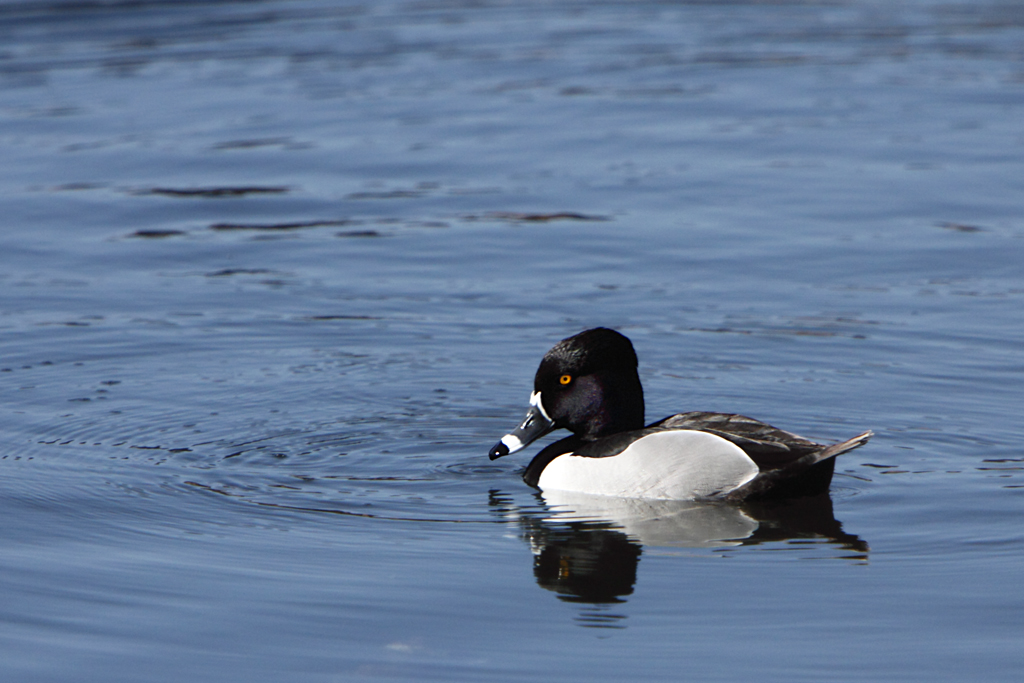
January can be such a quiet month. The bustle of the holidays are over, and people are returning to a normal rhythm at work. Things can be similarly quiet within the C&O Canal National Historical Park. With the cooler temperatures and shorter days, fewer people are venturing out to explore. But there is still so much to see in the Park in January. If you have a chance, go for a hike on the towpath and see what you can find while the world is quieter.
Identify trees
Trees are most commonly identified by their leaves and flowers, but with an attention to detail, you can identify each species with other clues. Look at the bark– is it smooth or does it have ridges running the length of the trunk? Look at the buds at the end of the branches — do they have hairs or they are closed up tight under scales? By knowing what to look for, you can investigate what tree species line the towpath.
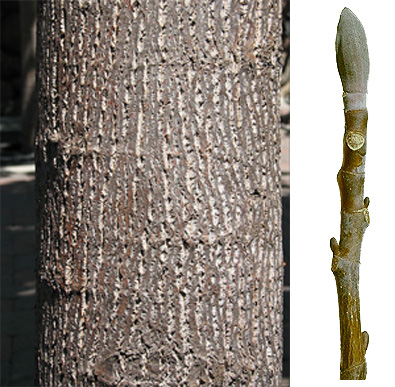
Tulip poplar (sometimes called Yellow poplar or Tulip tree)
(bark image: EncycloPetey, bud image: Virginia Tech)
The Tulip poplar’s bark is a light gray, almost green color and smooth when it’s young. As it ages, it becomes more ridged but has smooth peaks. The furrows, or small valleys between the ridges, are white and have a diamond pattern. The buds are large and elongated — some even compare them to a duck bill! If you break a twig, it should smell sweet and almost spicy.
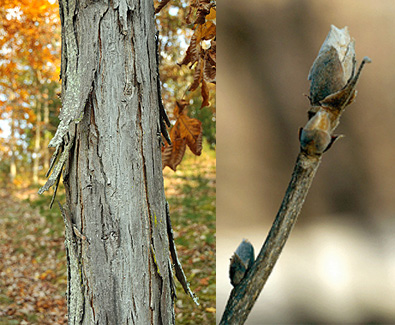
Shagbark hickory
(images: Virginia Tech)
The Shagbark hickory has gray bark that looks broken into long strips which is the main identifier for this species– it’s hard to miss! The strips curve away from the trunk of the tree, leaving a coarse, shaggy appearance and providing a great place for bats to roost! The buds have leaf scars, or woody pieces that cover the bud at the base. This species of hickory has a terminal bud (or the last bud on the twig) that is brown, has 3-4 scales, and is more elongated when compared to the other hickories.
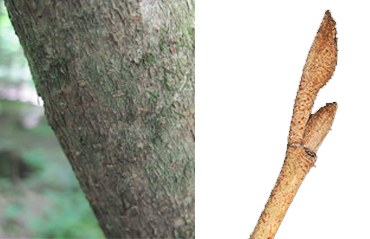
Witch-hazel
(bark image: Rob Duval, bud image: Virginia Tech)
Witch-hazel is a shrub or a small tree that has immense wildlife and ecosystem value as it is one of the earliest species to flower. (Look for it to begin flowering as early as February!) The bark is very smooth and is gray or gray-brown. The buds are distinctive; they look like a deer foot! The buds, or tiny folded leaves in this case, do not have any scales covering the bud.
Listen for the birds
Not all birds migrate south for the winter. In fact, you may be able to see more waterfowl in January than during other times of the year. Less foliage on the trees and less interfering noise can help you pinpoint where a bird is calling from, giving you a better chance to see of one of the many waterfowl that populate the Park. See how many of these species you can spot on your next winter hike.
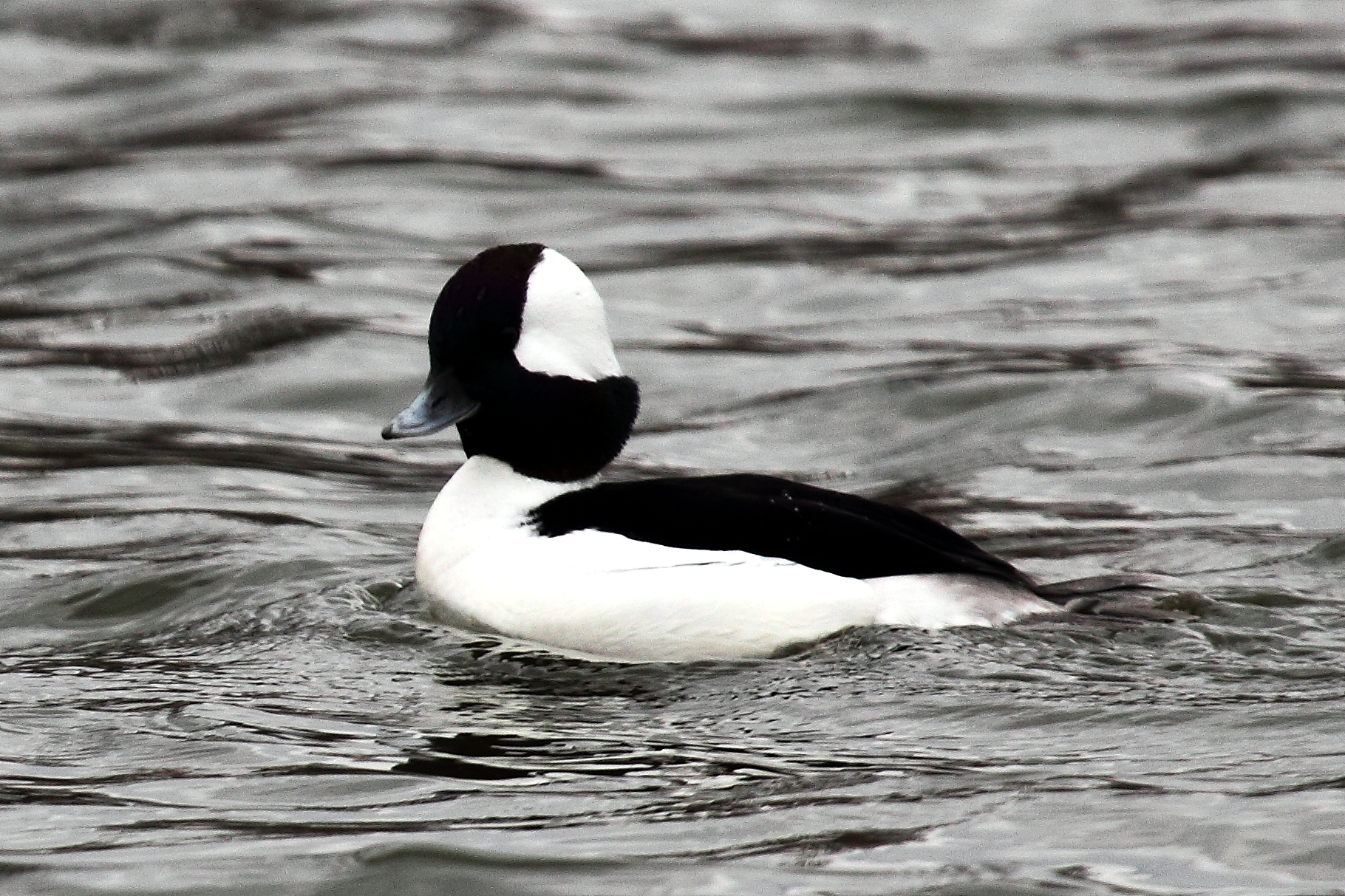
Male Bufflehead by Mr.TinDC
The Bufflehead is smaller than other ducks, with a large head and a short bill. Males have a large white patch on their head, with a dark back and white chest and flanks. Females are plainer, appearing brown or black with a distinctive, single white patch on their cheek.
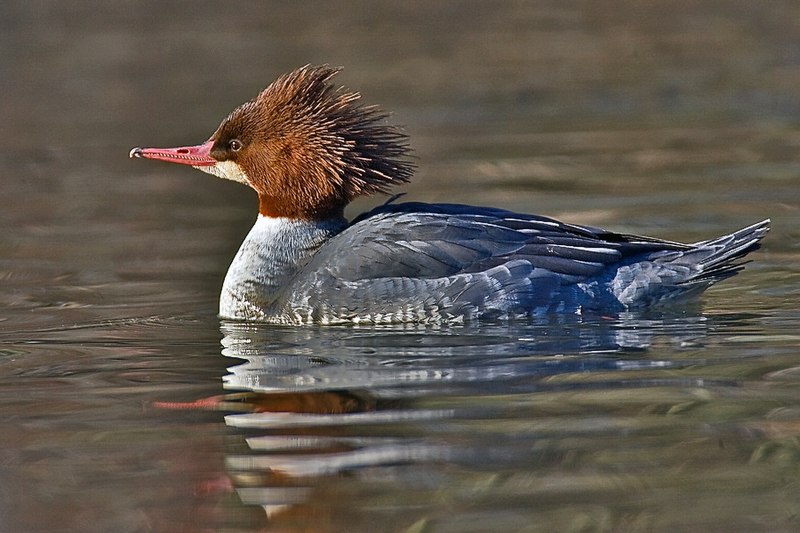
Common merganser by Alan D. Wilson, www.naturespicsonline.com
Unlike the rounded body shape of the Buffleheads, Common mergansers are much more streamlined. Males are striking with white bodies, dark backs, dark green heads, and a thin, serrated red bill. Females have dappled gray bodies, a white throat, and a rusty red head. If you see a duck dive under the water, this may be the bird you saw!

Male Ring-necked duck by Alan Vernon
Male Ring-necked ducks have simple colors of black, gray, and white. The neck ring is hard to see unless their neck is outstretched, so don’t worry if you don’t see it! Females are lighter, with brown bodies, a mottled gray face, and a white strip behind the bill. Both the male and female have a ‘peaked’ head, or look like they have a small hat on!
Look under the ice
If the weather is cold enough and the canal freezes, don’t think that all life under the water is frozen too. Fish are still slightly active, especially on warmer days when the sunlight penetrates the ice and warms the water beneath. Frogs and turtles are under there too, but many of them are in the muddy bottoms, in something called ‘torpor’. This is a period of inactivity that can last from a few days to even weeks, helping conserve the energy they have previously saved up. (However, they can’t be too deeply buried in the mud since they need to absorb oxygen through their skin from the water. Being buried under the mud would cause them to suffocate!)
So go out and explore the Park! We can’t wait to hear what you find!
Sources: Virginia Tech Dendrology, eBird (https://ebird.org/checklist/S44128936), The Cornell Lab’s All About Birds (https://www.allaboutbirds.org/news/), Virginia Tech Department of Forest Resources and Environmental Conservation (http://dendro.cnre.vt.edu/dendrology/), Virginia Department of Game and Inland Fisheries (https://www.dgif.virginia.gov/blog/frog-friday-where-do-frogs-go-in-the-winter/).





